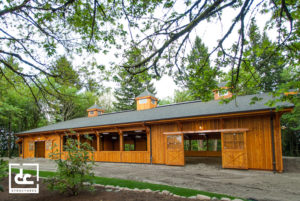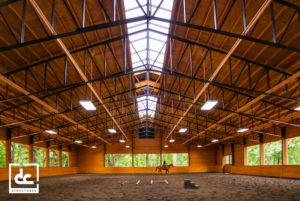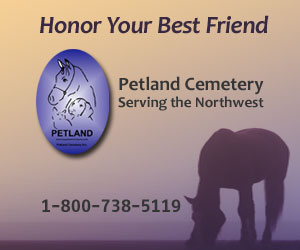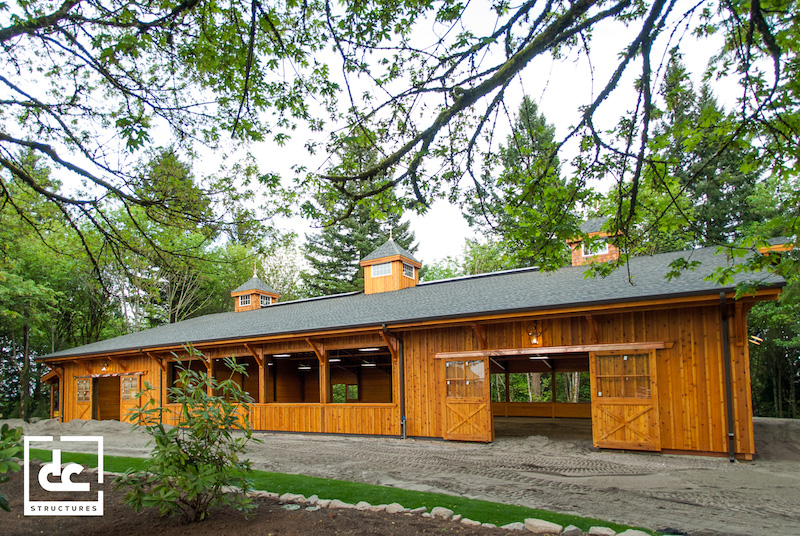Safety and Comfort for Horse and Human
By Dustin Gruetter

Maybe you participate in equine sports for fun, or perhaps you are there to win. Whatever the case, good showmanship will always be rooted in proper training and preparation. This, of course, would be rather difficult without access to state-of-the-art equestrian facilities. If you plan to care for horses, it’s of the utmost important your riding arena, stables, and other amenities are all designed with your horses’ health and safety in mind. Whether you’re a dedicated hobbyist or an equine property owner, the following logistical and safety concerns should always factor into your facility design.
- All barn materials should be free of chemical treatments, as they present health risks to horses that chew on them. Always opt for select-grade untreated lumber because, in addition to being free of dangerous toxins, it will also make your equestrian facilities last longer.
- The areas within and around a barn and arena should always be free of clutter. Loose items scattered about the aisles and breezeways are a safety hazard for horses and caregivers alike.
- Walkways should be no less than 12’ wide to allow horses to pass freely and turn around with ease. This is a matter of comfort for horses that minimizes their risk of injury. More so, it’s a safety precaution for the caregivers who find themselves in small spaces with their four-legged friends.
-

Photo credit DC Structures The aisle ways should have an even surface with good traction; the reality is that horses are very prone to getting hurt. Textured concrete or dirt without rocks are both great options.
- Stall fronts should have smoothed edges to avoid injury to the horse. We tend to recommend powder-coated, pre-galvanized steel stall fronts that are designed specifically to protect your horse from scratches.
- The only direction a stall door should swing is outward. Any inward-swinging doors can lead to potentially dangerous situations for caretakers—especially if the horse is anxious to get out.
- Barn lighting should be mounted high away from a horse’s reach or otherwise secured within strong wire casing. Horses are curious and willing to put a lot of foreign objects to the food test.
- Floor-to-ceiling height should be adequate for rearing horses. A minimum of 9’ from the floor to the ceiling is ideal.
dcstructures.com
dcbuilding.com
An Oregon native, Dustin Gruetter is a serial entrepreneur with a diverse portfolio of businesses to run. His two largest roles are as president of both DC Builders, an elite design and construction firm, and DC Structures, a construction materials company. With more than a decade of leadership and management experience, Dustin lends his expertise to Eris Creative as the head of business development. Dustin lives in Portland with his wife Ilanah, son Maxton, daughter Violet, and dogs Piper and Marley.






